A SUMMER DAY IN THE CENTRAL HIGHLANDS OF INDIA
09th April, 2018
Bhavna Menon
Summers are said to be the best time to see tigers but what many people miss in their single-minded focus on spotting the stripes in this season is the coming alive of not just one species but a plethora of life forms. It is summer when the forest sheds all its seasonal inhibitions and offers the patient and sensitive observer, some brilliant sessions in natural history.
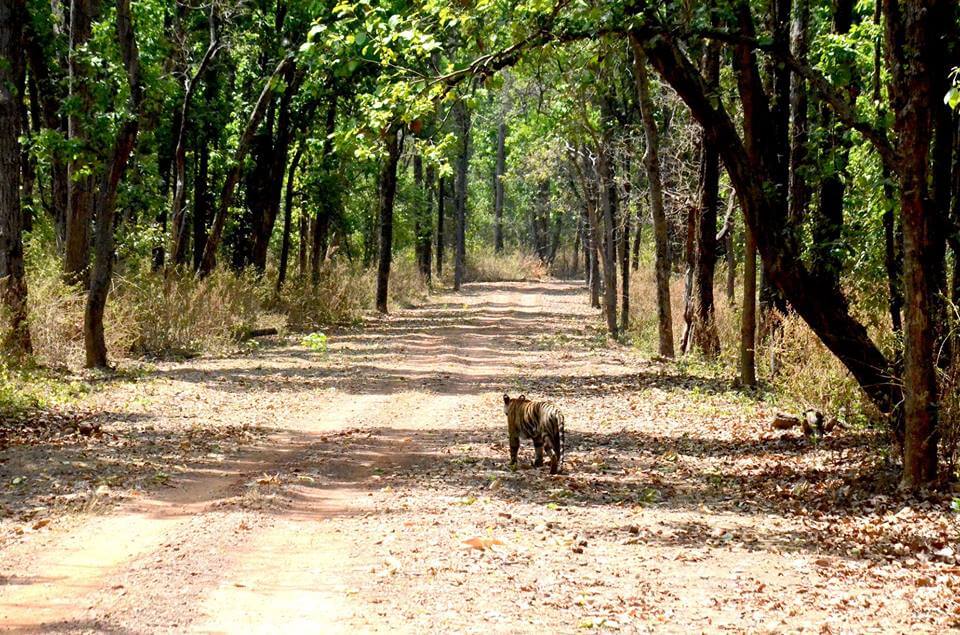
The dawn light breaks into the forest with a gentle coolness that belies the heat of the day ahead. The trees wake up to welcome the cool in their own ways – the tall ones stretch their branches, while the bamboo creaks, swaying gently in the morning breeze. As the coolness of the dawn gives way to the heat of the morning, the forest assaults its visitors with the dense, earthy fragrance of the lantana in flower. Enthusiastic birders are treated to the sight of coucals and peafowls dipping their baked bodies into the nearest water hole, quenching their thirst in the welcome shimmering water.
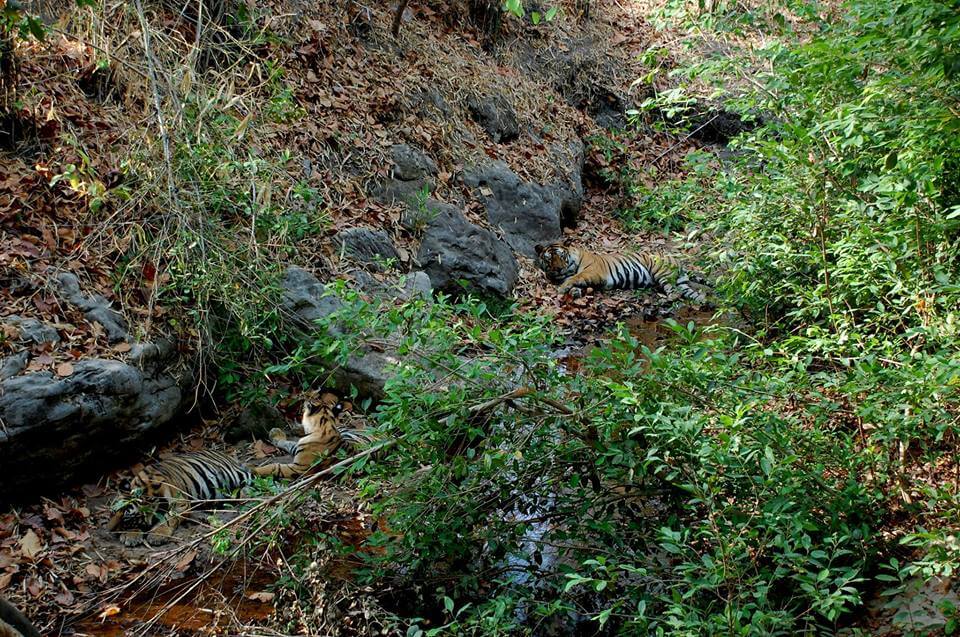
The deep ‘hoop hoop’ of the coucal as it shakes its wings free of water is answered by the haunting call of the Indian Pitta echoing through the forest, purposeful and loud for such a small bird. Seeing a Pitta takes effort, but the luckier and more patient birders may be able catch a fleeting glimpse of blue and green feathers, busily hopping on the leaf litter of the forest floor. The Pitta’s calls are usually backed by the sound of the Coppersmith Barbet who calls earnestly from the confines of a tree, resembling nothing as much as a trembling leaf. Only close looks are rewarded by the sight of its blood-red head and yellow chin.
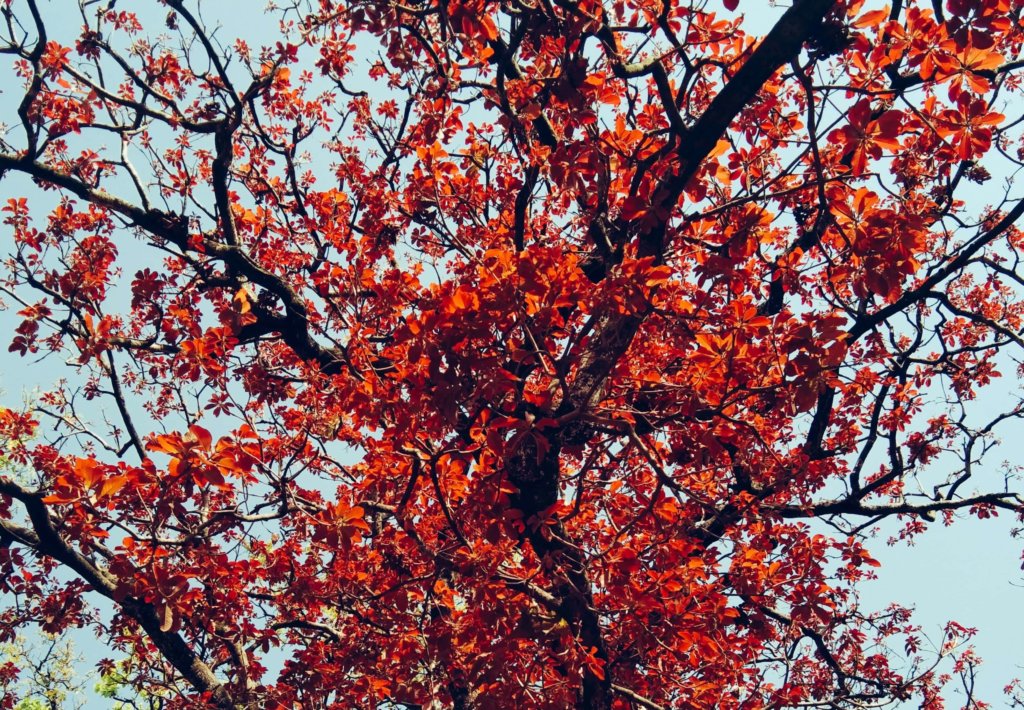
Mornings see the forest awash with the scarlet canopy of the tree evocatively known as the flame-of-the-forest. Locally known as the Palash, the scarlet flowers of this tree, also known as the bastard teak, dot the landscape on these hot, dry days like a series of bonfires. Considered to be an incarnation of the fire god Agni, this tree is beloved to the Hanuman or Grey Langur monkeys and often plays host to these silver haired sentinels of the forest who feast on the tree’s fruit pods. The searing heat of the palash flowers is reflected in the sky as it shimmers a relentless cerulean blue dotted with occasional tufts of cotton clouds on its surface. The Mahua (an economically important tree of India’s Central Highlands) is in full bloom during this season with its thick-petalled cream-coloured flowers littering the forest floor every dawn and new red leaves adorning its branches. Any description of summer would be incomplete without a mention of those most beloved members of the forest – its water bodies. Worshipped the year around, it is in summer that water becomes the most preferred venue for a diverse range of fauna to congregate. A flock of vultures dip their beaks into the nearest water body while wild boars wallow in the mud grunting with pleasure. A lone jackal makes a quick pit-stop, dispersing the vultures who take flight, their great wings making a swooshing sound as they perch on a dead tree. Forest streams carve their own gurgling paths through thick patches of the wavy kans grass, carrying with them the intoxicating fragrance of hot, wet earth.
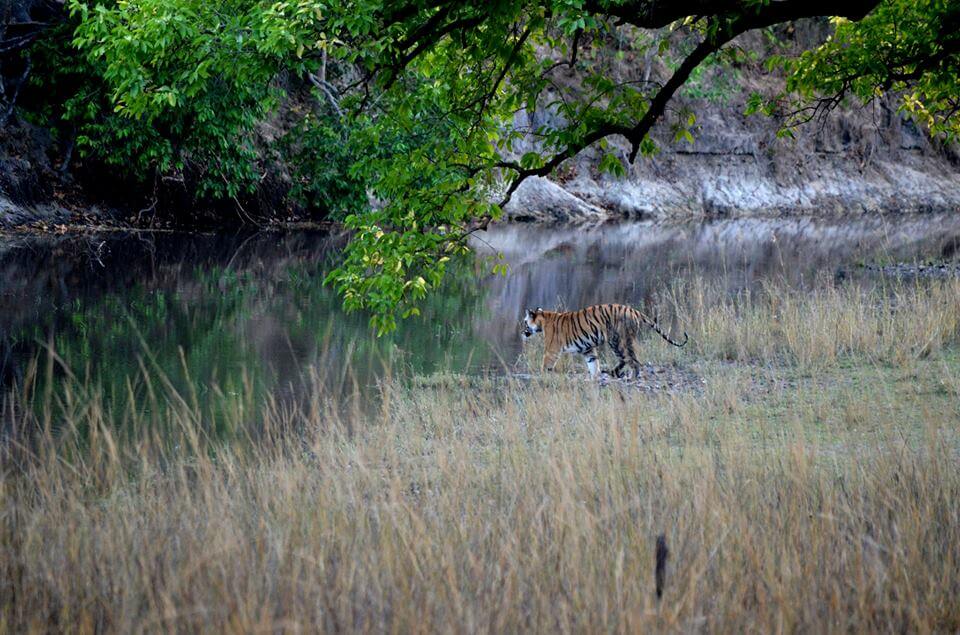
As the dawn gives way to the morning, the muddy forest floor is often a scrapbook of animal tracks and signs. Bear tracks that oddly enough resemble human footprints, bird-tracks of an active lapwing, hoof tracks of the Chital, pugmarks of the big cats and sometimes even a human shoe print giving away the location of a forest chowki or patrolling camp nearby. As the day becomes hotter, the wise visitor books his space under the best shade trees – the mango or the banyan.

The glossy, dark-green leaves of the mango trees and its branches are inhabited by the soot-black bodies of the koel bird and the legendary sweetness of the koel’s calls is a necessary ingredient in the successful ripening of the raw summer mangoes that stud the tree. Red eyes flashing, the male koel hops from branch to branch, reiterating the presence of summer for those still in doubt. A screech from the sky announces the arrival of the raptors or birds of prey who seem to be effortlessly air-borne, aided by the thermal or the warm-air currents that carry them to impossibly high vantage points in the sky to look for prey. With its sharp curved beak, its brown dotted body and yellow eyes and face, the Crested Serpent Eagle is one of these ‘thermalling’ raptors that glides to rest on the branches of a tree, calling melancholically in the midday heat.
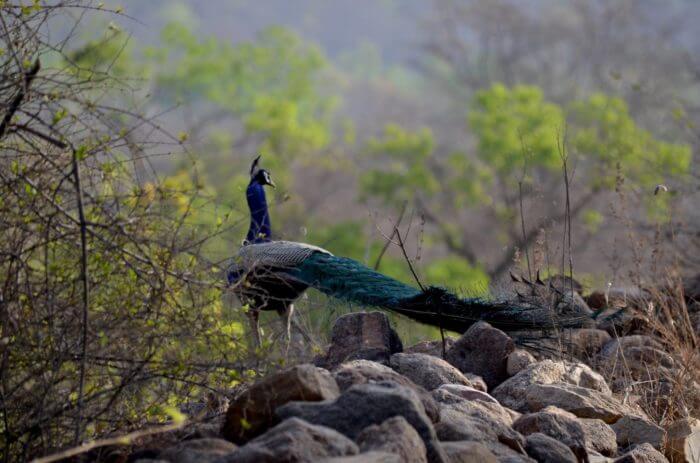
Mornings spiral into afternoons – the hottest, laziest part of summer days. The common hawk cuckoo or the brain-fever bird, flying over yellowing grasslands, hysterically warns all and sundry of imminent brain fever. The grasslands have a particular fragrance that is peculiarly summer’s own. A sun-crisped blade of grass smells like hay, while crushed grass, a sign of the elephants’ morning patrol or the grunting, grazing gaurs, has a sweeter odour. The forest occasionally explodes into a cacophony of honks and brays, sounding to the unfamiliar visitor, like a beast in its final death throes. These are the cries of the male Chital or the spotted deer. It is rutting season after all and the male deer are busy battling it out to mate. The lucky ones with the most impressive antlers are usually seen strutting and calling in their best attempts to woo the graceful females who graze unconcernedly in the vast meadows, serenely confident of their supremacy. The forest is lazily somnolent in the afternoons, siestas are an accepted and understood part of life. Only the long-legged Adjutant Storks venture out undeterred, picking their cautious way across the water looking for fish rendered unsuspicious by the heat of the afternoon, resembling fusty, old lawyers pondering deeply over old case files.
The forest thankfully welcomes the advent of the evening that brings with it relatively kind breezes, warmer than the coolness of the morning but a blessed relief, nevertheless. The forest rings with life once again as a flock of parakeets take flight screeching happily, leaf-green bodies glinting in the evening sun. Abandoning their cool daytime hideouts, the deer move back into the meadows, dotting the cream-yellow grasslands with their deeper shades of white-spotted brown. Dusk slowly envelops the forest, signaling the emergence of a phantom, absent so far. The forest is suddenly alive with the nervous calls of the deer announcing the arrival of a predator. A shadowy nocturnal figures pads softly through the forest, only given away by the sounds of a tail flicking against grass and the crunch of browning Sal leaves underfoot. A deep ‘hunf’ sound accompanies the sound of crunching leaves, the leisurely sounds a complete contrast to the hysteria taking place outside. Rested and fresh, after its afternoon siesta in the cool foliage of the mighty bamboo, the tiger stretches, shaking away the last vestiges of sleep and gathering its strength for its nocturnal patrol. The thick haze of summer nights descends upon the forest as the first stars appear and the cicadas set up their evening orchestra.
Subscribe to our blog
Get the latest posts in your email
